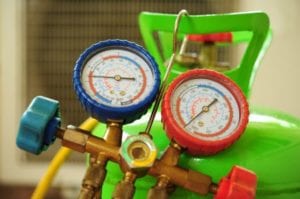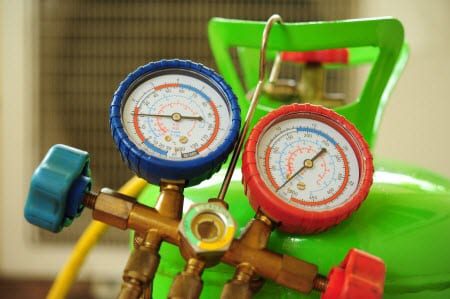 Most people take their central air conditioning system for granted. The purpose of this article is to highlight some important facts about all central air conditioning units. In particular, this article will focus on refrigerant, one of the basic components of your central air conditioning unit.
Most people take their central air conditioning system for granted. The purpose of this article is to highlight some important facts about all central air conditioning units. In particular, this article will focus on refrigerant, one of the basic components of your central air conditioning unit.
Some homes don’t have a proper air conditioning unit and are exposed to stale and muggy air. Other homes have old outdated central air conditioning systems. Not only is this air uncomfortable, it can also pose a health risk for children, the elderly, and pets. Knowing how your air conditioner works will help you when talking with a technician.
Central Air Conditioning: Basic Components
Your central air conditioning unit air includes refrigerant, a compressor, a fan, condenser coil, and an evaporator coil. The system pulls out heat from indoor air and transfers it outside, leaving the cooled indoor air to be recirculated. Air conditioning and cooling efficiency is measured using a Seasonal Energy Efficiency Ratio (SEER). A higher SEER signifies higher energy efficiency.
Central Air Conditioning: What is Refrigerant?
Freon is the chemical historically used to provide fuel for home air conditioning systems. The EPA has ordered a phase-out of the refrigerant by the year 2020, driving prices for replacement sky high. For the homeowner, phasing out Freon as a refrigerant, also known as R-22, can significantly increase repair costs.
According to the EPA… ozone-depleting substances (ODS) are regulated as class I or class II controlled substances. Class I substances have a higher ozone depletion potential and have been completely phased out; with a few exceptions. Class II substances are all hydro-chloro-fluoro-carbons (HCFCs). New production of most HCFCs will be phased out by 2020. The most common HCFC in use today is HCFC-22 or R-22, or Freon, the refrigerant still used in existing air conditioners and refrigeration equipment.
Homeowners are now recommended to use the Puron refrigerant to maintain their indoor comfort. Also known as R-410A, Puron is approved by the EPA to replace Freon 22 and is the world’s first, long-term solution to ozone depletion. To learn more about R-410A, its history, its availability and the R-22 phase out, see R-410A.
In summary, understanding how your air conditioner works helps when talking with a technician. The focus of this article is on one of the important components of a home air conditioning system, the refrigerant. Based on this article, you now have a fuller understanding of R-22 phase out and the implementation of newer more energy efficient and environmentally friendly refrigerants like R-410A. The good news is that if your air conditioning system is less than seven years old, there’s a good chance it’s equipped with the newer R-410A refrigerant.
Whether you are a homeowner that needs your air conditioning system checked (we highly recommend you have your system inspected and maintained each year to keep it running at peak efficiency), repaired or desire a completely new high effeciency unit installed, the technicians at Jerry’s Plumbing, Heating and Air Conditioning are available to deliver quick and friendly service. Call Us Today!





0 Comments